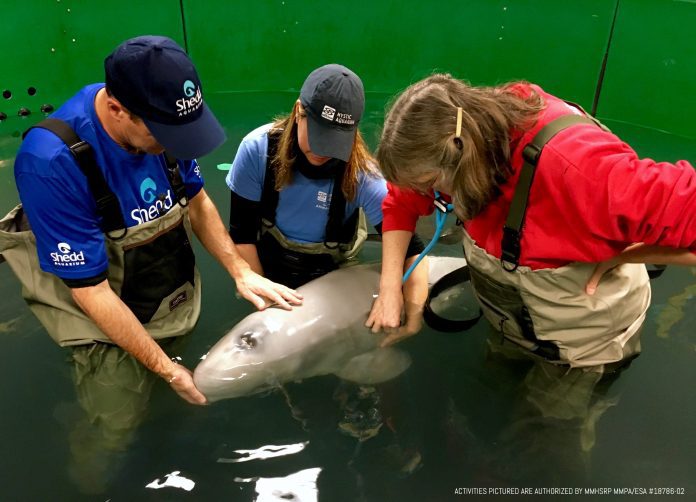
Researchers at the Alaska SeaLife Center in Seward have published their experiences in the care of two beluga calves in the journal Polar Research, a report that includes the successful rehabilitation of a young whale named Tyonek.
The first beluga was a neonatal male beluga calf stranded after intense storms in Bristol Bay in 2012. The second was a stranded male beluga calf spotted by a pilot during a flight over Cook Inlet in 2017.
Treatments at ASLC included in-pool flotation support, antimicrobials, gastrointestinal support and close monitoring of respiration, urination, defecation and behavior.
ASLC staff said the Bristol Bay calf succumbed to sepsis secondary to possible pre-maturity-related lack of passive transfer to antibodies, while the Cook Inlet calf recovered, and all medications were discontinued. Since this surviving calf was deemed unable to continue to survive on his own, he was placed in long-term care at a zoological facility to live with other belugas in 2018. He is now in residence at SeaWorld San Antonio.
“This was one of many instances where animal care experts, veterinarians and research scientists from multiple organizations came together with a singular goal of helping a little whale in need,” said Steve Aibel, a cetacean export from Shedd Aquarium who continued to Tyonek’s care in Alaska and now continues to work with him at SeaWorld.
Findings in this paper offer tools to assist in the conservation of endangered populations as well as aid in wildlife rescue in the future, ASLC officials said.
The research included in the article is a collaboration of efforts of many contributors, ranging from Sea World, Mystic Aquarium and the Vancouver Aquarium to the Woods Hole Oceanographic Institute and the National Oceanic and Atmospheric Administration.














